Recently, the research group led by Professor Jiao Weidong at the School of Engineering, Zhejiang Normal University, collaborating with experts from Tsinghua University, has achieved significant progress in the field of intelligent diagnosis for rolling bearings. Their related work, titled "Double attention-guided tree-inspired grade decision network: A method for bearing fault diagnosis of unbalanced samples under strong noise conditions", was published on January 30, 2025, in the SCI Q1 Top Journal Advanced Engineering Informatics (https://www.sciencedirect.com/science/article/pii/S1474034624006554). This paper was also awarded the "Best Researcher Award" by the journal's organizing committee.
Achieving hierarchical multi-class fault diagnosis for unbalanced bearing datasets under strong noise conditions is a challenging problem. To address this, this paper developed a hierarchical multi-class fault diagnosis model named the Double Attention-guided Tree-inspired Grade Decision Network (DATGDN).First, a top-level triplet attention mechanism and an innovative multi-head convolutional attention mechanism were designed to capture bearing fault features. Furthermore, these mechanisms can be integrated into a standard convolutional neural network to form a dual attention-guided backbone network. Finally, by incorporating an innovative tree-structured decision network, the DATGDN enables hierarchical decision-making regarding the location and severity of bearing faults.The developed model was tested on two sets of bearing data featuring different signal-to-noise ratios (SNRs) and various imbalance ratios. Experimental results demonstrate that, compared to several state-of-the-art algorithms, the proposed method not only achieves higher recognition rates across various tasks but also enables graded decision-making concerning the location and size of bearing faults.
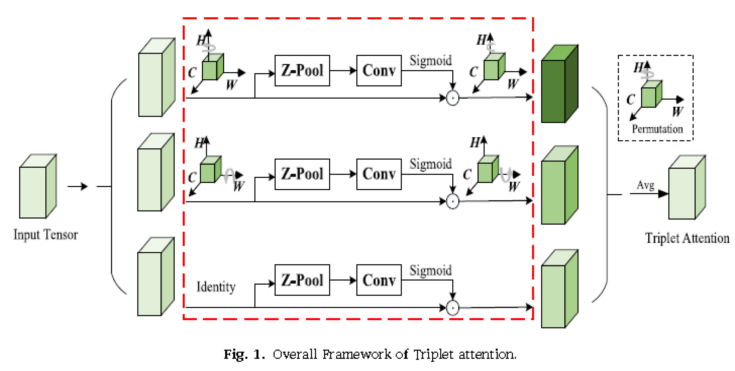
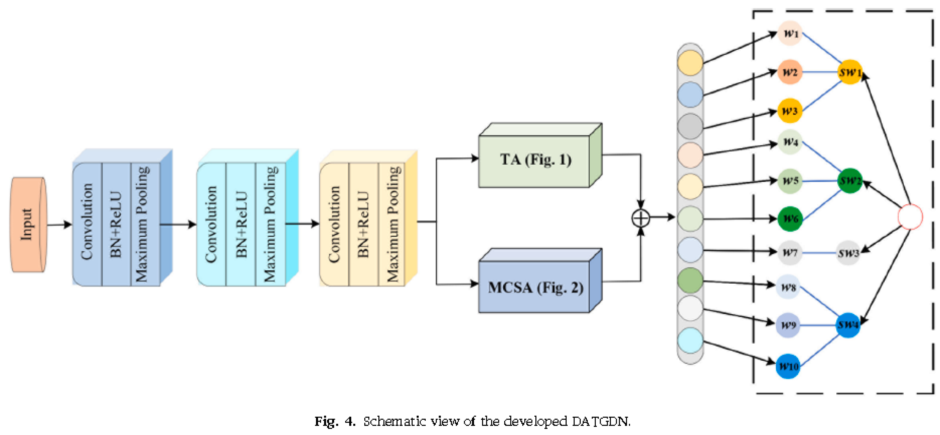
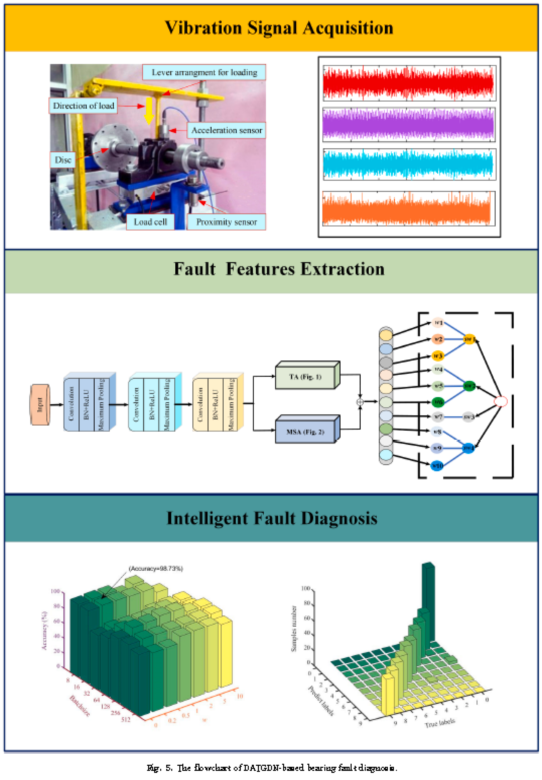
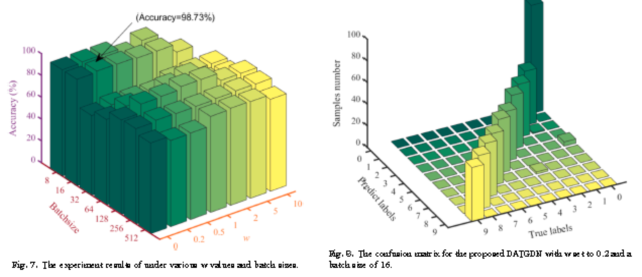
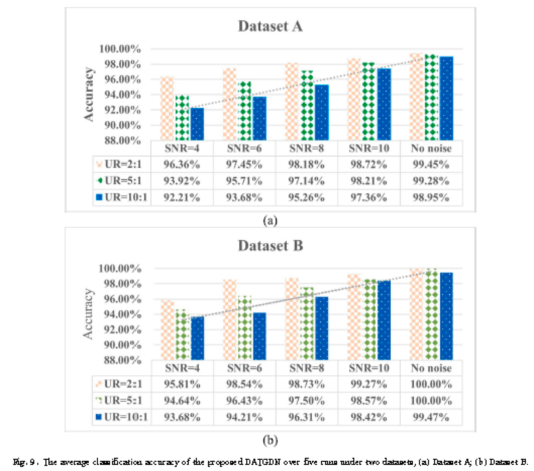
This paper proposes a DATGDN model that simultaneously possesses diagnostic performance and interpretability, designed for diagnosing unbalanced bearing datasets in noisy environments. (a) Within the DATGDN framework, the DACNN network serves as the backbone, effectively extracting fault-related features, particularly in noisy environments, by utilizing the Triplet Attention (TA) and multi-head convolutional attention mechanisms.(b) DATGDN incorporates the Tree-inspired Grade Decision Layer (TGDL) architecture designed for hierarchical decision-making. It begins with fault classification and then proceeds to severity assessment, reflecting the systematic evaluation process inherent in human cognition.(c) Across multiple test tasks involving various Unbalance Ratios (URs) and Signal-to-Noise Ratios (SNRs) in two experimental datasets, the proposed Grade Decision Network (GDN) consistently outperformed several state-of-the-art algorithms in terms of recognition rate, thereby confirming the effectiveness and superiority of the proposed model.In future work, the interpretability of the mechanisms within the hierarchical architecture will be thoroughly examined, potentially using techniques such as Integrated Gradients or Gradient-weighted Class Activation Mapping (Grad-CAM). Furthermore, the model's noise resistance will be further investigated.
Professors Jiang Yonghua (Zhejiang Normal University) and Jiao Weidong (Zhejiang Normal University), along with Professor Feibin Zhang (Tsinghua University), served as the corresponding authors of the paper. Zhejiang Normal University is the paper's primary affiliation. Dr. Dong Zhilin, an early-career PhD faculty member at Zhejiang Normal University, is the paper's first author.This research was supported by grants from the Zhejiang Provincial Natural Science Foundation (including Key Projects and Youth Projects), the Jinhua Municipal Key Science and Technology Program Project, and others.
The Jiao Weidong research group primarily focuses on research in intelligent detection and signal processing, mechanical dynamics, and equipment condition monitoring and fault diagnosis. The group has secured funding from various sources, including projects under the National High-Tech R&D Program (863 Program), General Projects and Youth Science Fund Projects of the National Natural Science Foundation of China (NSFC), the Outstanding Youth Fund, Key Projects, and General Projects of the Zhejiang Provincial Natural Science Foundation, as well as Major Projects of the Jinhua Municipal Science and Technology Program.
